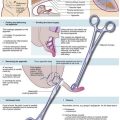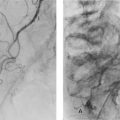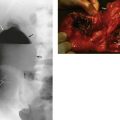Preoperative assessment
Introduction
For elective treatment, clerking is often performed at a pre-assessment visit by a junior doctor or a surgical or anaesthetic assistant. This is to anticipate potential medical and social complications, and take preventive action (Box 7.1). In patients with significant co-morbidity, a senior anaesthetist (anaesthesiologist) should also make an assessment. This is often performed in specialised clinics, which increasingly have direct access to advanced assessment tools such as cardiopulmonary exercise testing and pulmonary function analysis.
Principles of preoperative assessment
The essence is careful questioning and examining to foresee anaesthetic and surgical problems, plus any social aspects relevant to the admission. Most surgical cases are uncomplicated but preventable disasters occur unless the approach is systematic. The patient’s condition may need optimising, taking the urgency of surgery into account. The assessor aims to answer the questions in Box 7.1. The review may disclose the need for tests or other actions and also identifies patients with medical co-morbidity who have risks of particular perioperative problems. Current treatment of co-morbidity (e.g. diabetes, hypertension) also needs review. Investigations provide baseline information against which later changes can be measured, e.g. echocardiography in heart failure. Common problems of high-risk groups are summarised in Table 7.1.
Table 7.1
High-risk groups for perioperative complications
| Group | Particular risks | Management |
| Premature or tiny babies, neonates and infants | Fluid and electrolyte loss Heat loss in operating theatre |
Careful measurement and replacement of fluids and electrolytes Warming blanket, temperature monitoring |
| Patients over 60 | Cardiovascular disease | Chest X-ray and ECG preoperatively if indicated by guidelines, and monitoring during operation |
| Very elderly patients | Confusion Hyponatraemia Immobility |
Multifactorial—see Chapter 8 Preoperative electrolyte estimations and correction Good nursing and rehabilitation |
| Smokers | Postoperative chest infection and atelectasis Increased risk of myocardial infarction |
Stop smoking before operation—ideally at least 4 weeks beforehand Preoperative chest X-ray Preoperative and postoperative physiotherapy Preoperative ECG; avoid hypoxia during and after operation; postoperative oxygen therapy |
| Obese patients | Increased risk of DVT Increased risk of wound infection Reduced mobility |
DVT prophylaxis—see Chapter 12 Preoperative counselling during consent process Early mobilisation with assistance Encourage patients to lose weight prior to surgery |
| Patients with intercurrent medical disease | Depends on medical condition | Early referral to anaesthetist and/or medical specialist |
Essentials of preoperative assessment
Standard preoperative procedures vary in different hospitals but basic steps ensure the greatest patient safety (see Box 7.2). The nature and urgency of the operation and the state of the patient determine what is needed.
Explanations to the patient and informed consent
(see Ch. 1 for the legal framework, for further detail and special cases)
Marking the operation site
When obtaining final consent, the surgeon should mark the operation site on the patient’s skin with an indelible pen. This is particularly important if the operation could be performed on either side of the body, for example an inguinal hernia repair or limb amputation. It is even more important if the patient is likely to be turned prone (face down) in theatre as this causes confusion, and failure to mark the site represents a disaster in waiting (and there is no legal defence). This marking procedure also allows the patient to agree which operation is to be done and on which side. Checking processes for identity, type of operation, side and marking should be in place at several stages during the patient’s journey to the operating theatre and many units have introduced the World Health Organization checklist (see Ch. 1, Box 1.8). Of course, the surgeon needs to be entirely clear what is to be done on the anaesthetised patient presented to him or her!
Planning the order of an operating list
For elective cases, the following order can normally be recommended:
1. Latex allergy—the theatre needs to have all latex containing products removed and be ‘purged’, i.e. pressure ventilated, for several hours beforehand
2. Paediatric cases—to minimise the period of starvation and to reduce anxiety
3. Diabetic patients—to make perioperative diabetes management as smooth as possible, minimise the period of starvation and return rapidly to normal diet and treatment
4. Adult day cases—to maximise the amount of available recovery time before discharge
5. Inpatients with no special theatre requirements
6. Contaminated, infected cases, colorectal cases, gangrenous limbs—so as not to infect later cases on the list
7. Patients with transmissible infections, e.g. MRSA, blood-borne viral infections requiring barrier nursing—non-essential equipment and personnel are removed from theatre; disposable items replace recyclable items of linen, and theatre can be cleaned before next list
Preparation for major operation
History
Presenting complaint: Seen urgently in outpatient clinic 3 weeks ago with a 5-week history of loose stools three to five times a day, without blood or mucus. GP reported three stool specimens positive for occult blood. Lost about 4 kg over the last 3 months, but has been trying to lose weight anyway.
Results of outpatient investigations:
• Flexible sigmoidoscopy—obvious fungating tumour of upper rectum. Scope could not be passed beyond it. Biopsies confirmed adenocarcinoma
• Contrast enhanced CT scan of abdomen and pelvis—no other synchronous colonic cancers seen; liver free of metastases
• Chest X-ray—normal, no metastases
• Transrectal ultrasound for local staging—no spread outside bowel wall
• Blood tests: full blood count—haemoglobin 11.6 g/L, otherwise normal. Urea and electrolytes, liver function tests—normal
Systems enquiry: Generally well, but recent onset of shortness of breath after walking 200 metres on flat ground; occasional fast palpitations. No other cardiorespiratory symptoms. Poor stream on micturition. Nil else on systems enquiry.
Past medical history: Appendicectomy aged 14; no anaesthetic complications. Serious farming injury to left elbow aged 20. Jaundiced during the Second World War in Asia, nil since. Hypertensive for 10 years and on drug treatment for 5 years. Diabetes discovered 3 years ago on routine urine testing, controlled by diet alone.
Family history: Mother was obese; died age 55 from complications of diabetes (gangrene). Older brother had major stroke at 64 but partially recovered. No family history of bowel cancer.
Social history: Widowed for 2 years, wife died of breast cancer. Has one son and one daughter, both married with young children but living far away. Lives in own house with an upstairs lavatory, on a smallholding with a few stock animals. Lives independently, and uses car for shopping. Smoker—20 cigarettes a day since age 15; alcohol intake averages 4 units a day.
Drug history: Takes atenolol 50 mg (a beta-blocker) and bendroflumethiazide 2.5 mg (a diuretic) once a day in the morning for hypertension. Takes aspirin 75 mg daily ‘for his heart’. Told in the past not to have penicillin, but cannot recall why; does not remember when he last had penicillin. Not allergic to iodine.
Summary
A problem list was constructed from this information, which led to further investigations and a management plan. The reasoning is shown in Table 7.2.
Table 7.2
Example of preoperative assessment of a patient admitted for a major operation (see text, Preparation for major operation)
| Problem | Surgical significance | Plan of action for each problem |
| 1. ‘Mild’ diabetes mellitus | No such thing as mild diabetes! Is it under good control? |
All urine samples to be tested for glucose Fasting blood glucose estimation and HbA1c May need sliding scale insulin perioperatively |
| 2. Obesity | Multiple potential problems Lifting and handling on the ward and in the operating theatre May make access difficult at operation Predisposes to wound infection Increased risk of deep vein thrombosis or pulmonary embolism |
Early referral to anaesthetist Is special bed or operating table required? Availability of hoist postoperatively Ensure adequate theatre time available plus at least two assistants Consider delayed primary closure of wound if contaminated Prophylaxis, e.g. low dose heparin plus graduated compression stockings |
| 3. Hypertension | How well is hypertension controlled on present medication? Is elevated BP on admission just due to anxiety? Are there other complications of hypertension such as ventricular hypertrophy or dilatation? |
Monitor blood pressure 4-hourly on admission and then decide about drug therapy Check pulse rate and BP at intervals over several hours Perform (and check) ECG and chest X-ray. Echocardiography if indicated |
| 4. Recent shortness of breath on exertion and palpitations | Are these merely symptoms of anxiety or significant cardiac or respiratory disease? | Consult cardiologist re palpitations ECG and chest X-ray Possibly lung function tests Recheck Hb—has anaemia worsened? |
| 5. Poor urinary stream and enlarged prostate | Possible carcinoma of prostate Possible difficulty with catheterization required at operation Risk of postoperative urinary retention when catheter removed |
Measure plasma PSA Transrectal ultrasound; biopsy if necessary Anticipate—may need suprapubic catheterisation kit in theatre Anticipate |
| 6. Jaundice in the past | History suggestive of hepatitis | Serological tests needed if hepatitis B or C is likely |
| 7. Smoker | Possible occult lung cancer Possible impaired lung function Increased risk of postoperative chest infections Increased risk of myocardial infarction |
Chest X-ray Respiratory function tests Preoperative physiotherapy and breathing exercises Postoperative oxygen therapy |
| 8. Left elbow injury | May cause inconvenience during operation | Inform theatre staff about need for careful positioning on the operating table |
| 9. Diuretic therapy | Are electrolytes and renal function normal? | Plasma urea, electrolytes and creatinine estimations |
| 10. Aspirin therapy | Could gastric irritation partly account for mild anaemia? May cause excess bleeding at operation |
Use non gastric irritant analgesics Anticipate—stop 10–14 days before surgery if practicable |
| 11. Possible penicillin allergy | A penicillin often used for prophylaxis or treatment of infections | Record possible penicillin allergy; alternative drugs may have to be used |
| 12. Cardiac murmur | Is this clinically significant? Is cardiac antibiotic prophylaxis necessary? |
Consult anaesthetist or cardiologist; consider echocardiogram Consult guidelines, e.g. BNF |
| 13. Lives alone, looks after animals | Who will look after him when he returns home? Who will look after animals while he is in hospital? |
Discuss domestic arrangements and convalescence plans with medical social worker |
| 14. Low haemoglobin | Not low enough to need preoperative transfusion but there is less reserve for the operation Potentially extensive operation—may have large blood loss |
Order at least two units of blood to cover operation Order extra blood, i.e. at least 4 units in all |
| 15. May need temporary or even permanent colostomy | Does he understand about stomas? Will he be able to cope? |
Refer to stoma nurse for counselling and possible preoperative ‘trial’ of colostomy appliance (see Ch. 27) |
| 16. Bowel will be opened during operation | Potential for faecal contamination of abdominal cavity and wound | May need bowel preparation and will need perioperative prophylactic antibiotics |
| 17. Lesion at pelvic brim | Does it involve the ureter? | Consider ultrasonography of kidneys to exclude hydronephrosis |
| 18. Varicose veins | Increases risk of DVT (already high because of major pelvic operation and age 70) | Give prophylaxis—low dose heparin, antiembolism stockings Early mobilisation |







